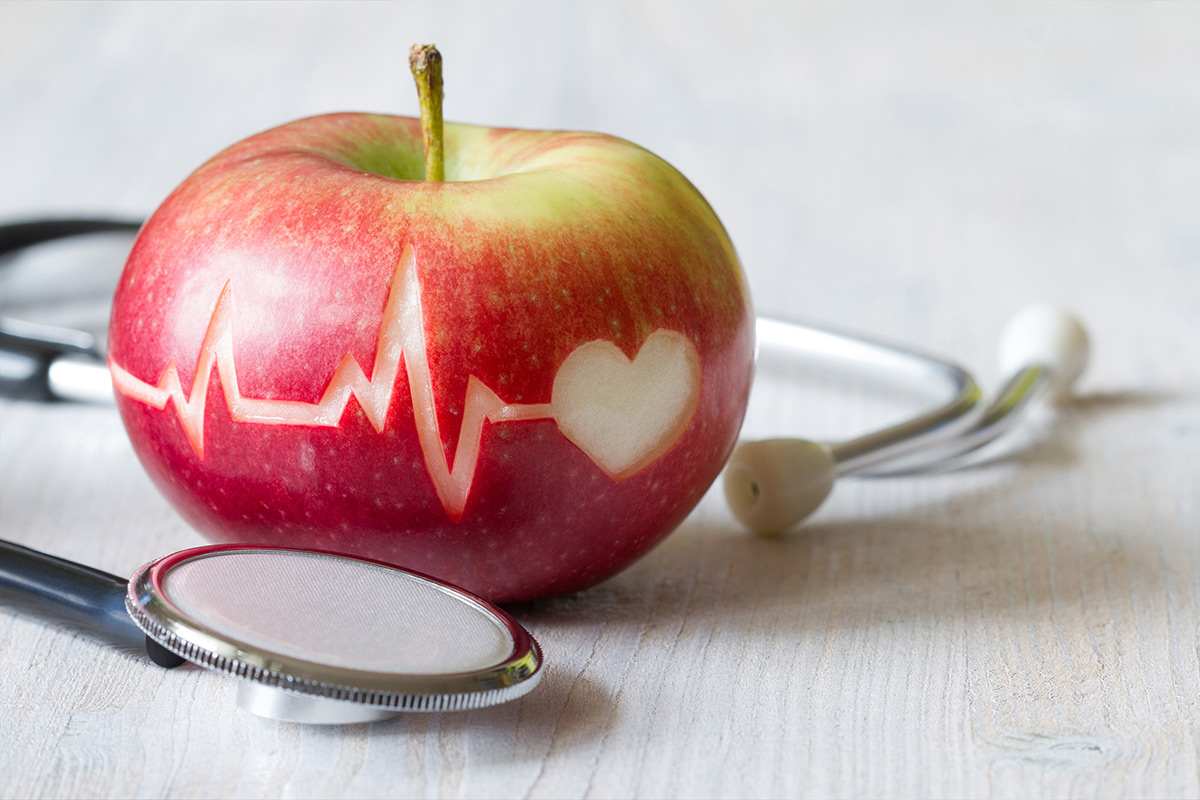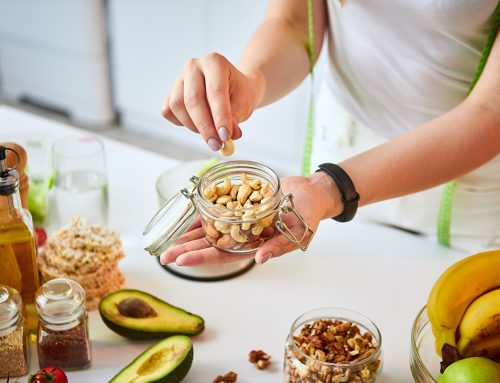Managing diabetes is often easier said than done, but you’re in the right place! A diagnosis of diabetes or prediabetes can feel overwhelming, especially when considering lifestyle changes that have been part of your routine for years. Adding to the challenge, the amount of conflicting information available online can make managing your sugar levels even more confusing. The good news? There is an evidence-based, structured approach to help you get started, and YOU are the one in control! Let’s start with the ABCs of diabetes: A1C, Blood Pressure, Cholesterol, and Smoking.
A: A1C
A1C is a measure of your average blood sugar level over the past 2–3 months, expressed as a percentage. You may also see it referred to as HbA1c or hemoglobin A1C. For most people with diabetes, the recommended target is an A1C below 6.5–7.0%, which correlates to an average blood sugar of around 140–150 mg/dL. Maintaining your A1C in this range can help prevent complications like nerve damage, vision issues, and heart disease. It’s an excellent indicator of how well you’re managing your diabetes and whether adjustments are needed to stay healthy.
One important thing to remember is that A1C reflects an average, so achieving consistent habits over time is key to improving it. If you’re unsure where to start when it comes to changing your A1C levels, your HealthCoach can guide you toward solutions that fit your lifestyle. As a member of LIVE TULA, you’re already on the path to better A1C management!
B: Blood Pressure
High blood pressure, also known as hypertension, can worsen diabetes complications by putting extra strain on your blood vessels, heart, eyes, and kidneys. It is often called the “silent killer” because it typically shows no symptoms until significant damage has occurred. For most people with diabetes, it is recommended to keep blood pressure below 130/80 mmHg, although your doctor may set a different target that’s best for you (2).
Since high blood pressure often presents no symptoms, the only way to know if it’s elevated is to have it checked regularly. You can check your blood pressure at home using an automatic cuff or visit a local pharmacy or doctor’s office for a reading. Regular check-ups, a balanced nutrition plan, body movement, proper hydration, and possibly medication can help maintain normal blood pressure. Even if your doctor has prescribed medication, lifestyle changes play a critical role in managing blood pressure. Here are three simple and effective lifestyle habits that can help you control your blood pressure:
- Eating plant-based foods: Incorporating more vegetables, fruits, and plant-based proteins into your diet can lower blood pressure. Start by adding one vegetable to your lunch each day and gradually increase your intake. This can eventually lead to dedicating one day a week to plant-based foods, like “Meatless Monday.” Reducing animal protein helps decrease saturated fat intake, which contributes to heart disease and worsens insulin resistance. Plant-based proteins like organic tofu, beans, and lentils also boost fiber intake, which decreases cholesterol, improves gut health, and increases insulin sensitivity!
- Reducing your salt intake: Americans typically consume about 3,500 mg of salt daily, far exceeding the American Heart Association’s recommended upper limit of 2,300 mg. Check the sodium content in the foods you eat by looking at nutrition labels, and aim for meals with less than 500 mg of sodium and snacks with less than 140 mg.
- Body Movement: This is a double win! It helps manage both blood pressure and blood sugar. Exercise doesn’t have to mean heavy weightlifting or marathon running. Think about movements you enjoy, like golfing, dancing, walking, yoga, or pickleball. If you’re unsure what you enjoy, try different activities with others to find something fun and sustainable.
C: Cholesterol
Cholesterol is a fatty substance found in your blood, but not all cholesterol is bad! High-Density Lipoproteins (HDL) are beneficial because they help remove the bad cholesterol, known as Low-Density Lipoproteins (LDL), from your bloodstream. Excess LDL can build up, causing your blood vessels to stiffen, leading to heart attacks and strokes.
There are many ways to lower cholesterol levels, and your healthcare team will tailor the best approach based on your current levels. One simple method is adding soluble fiber to your diet. Foods rich in soluble fiber include carrots, broccoli, onions, artichokes, bananas, berries, apples, pears, legumes, oats, and barley.
You can check your cholesterol levels through a blood test. If you’re unsure of your levels, ask your healthcare provider to include a lipid panel in your next blood workup. This test provides important numbers such as HDL, LDL, total cholesterol, triglycerides, and Very Low-Density Lipoprotein (VLDL) cholesterol. Some lipid panels may include additional measurements, but these are the standard ones.
S: Smoking
Smoking has a profound impact on diabetes management. It damages blood vessels, reduces blood flow, and leads to many complications, including heart disease, stroke, and poor wound healing. Quitting smoking is one of the most effective ways to improve health outcomes for individuals with diabetes. Additionally, quitting smoking can positively impact your cholesterol levels, further reducing the risk of cardiovascular complications.
This information may not be new to you, especially if you currently smoke. If you are considering cessation, remember that studies have shown a significantly higher success rate for smoking cessation when a combination of behavioral support and medicinal methods is used. Having a structured approach increases your chances of success. There is no “one size fits all.” Gender, culture, and age should be considered when approaching this (5). Remember that change does not have to look a certain way to be considered successful; with each step you take, you gain experience and knowledge of what works or does not work.
Small studies suggest that aromatherapy, specifically black pepper essential oil, may reduce smoking cravings. In the intervention, participants were instructed to put three drops of black pepper oil on a cloth. When they felt the urge to smoke, they inhaled the scent for two minutes (7,8). After the two minutes were up, they reassessed their urge to smoke. The difference between their pre- and post-tests showed the effects of aromatherapy and mindfulness on their nicotine urges. If this is something you would like to try, consider consulting with your healthcare provider about this complementary treatment. The National Cancer Institute also recommends chewing on pickles, apples, or celery to help reduce the physical need to smoke. To keep your mouth busy and curb psychological cravings, try chewing carrots, pickles, apples, or sugarless gum (9).
The Interconnected Impact of Diabetes Management
Each component of the ABCs of Diabetes does not operate in isolation; they are interconnected. For example:
- High A1C levels can contribute to blood vessel damage, making blood pressure management more challenging.
- Elevated cholesterol can lead to blood vessel damage, which affects blood pressure and may increase A1C levels due to the associated stress on the body.
- Smoking can elevate both blood pressure and cholesterol levels, further complicating diabetes management.
Sending Health Your Way!
The Tula Clinical Team
Austin MS, RDN, CSR, LDN, CD
Aubree RN, BSN
Tula Takeaways |
|---|
| 1. Not Alone: There are many complications associated with unmanaged diabetes, and these can be frightening. Managing diabetes is a team effort. Working closely with your healthcare provider and HealthCoach can help you take control of your health and reduce the risk of diabetes-related complications. |
| 2. Prevention is the Best Medicine: Mastering the ABCs of diabetes helps you prevent many complications that arise from unmanaged diabetes. |
| 3. Maintain Protocol Consistency: Incorporating healthy lifestyle activities into your daily routine can significantly support any consistent protocol your healthcare professional may have you following. Make sure to check in with them if you need to change your management plan and let them know how consistent you have been! |
The LIVE TULA blog is informational and not medical advice. Always consult your doctor for health concerns. LIVE TULA doesn’t endorse specific tests, products, or procedures. Use the information at your own risk and check the last update date. Consult your healthcare provider for personalized advice.






